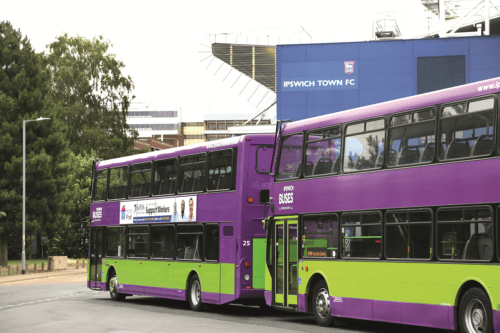
Jonathan Welch speaks to Ipswich Buses Managing Director Dan Bassett about the municipal operator’s 120th anniversary, its recovery from the pandemic and its plans for the future
If I said Ipswich, the first thing that many people might think of is the town’s football club. Standing across the road, facing the modern stadium of the 145 year old club, is another part of the town’s heritage: the 120 year old depot of local bus operator Ipswich Buses, which recently held an event in association with Ipswich Transport Museum to mark its birthday.
Situated 67 miles north-east of London, Ipswich is one of the country’s oldest towns, able to trace its roots back to Roman times, and is the third-largest population centre in East Anglia, after Norwich and Peterborough. It sits roughly 12 miles inland on the estuary of the River Orwell, and was one of the first towns in England to have gas powered street lights.
On Sunday 23 July, a fleet of classic buses gathered outside Ipswich Buses’ historic depot, arriving with dignitaries including the town’s Mayor, Lynne Mortimer, aboard before lining up for a photocall. “I remember when there were still trolleybuses when I was a small child,” she said. “As a girl I’d jump on and off the platform at the back after the motorbuses took over. I remember once jumping off and hitting a lamppost, I was always a bit more careful after that.”
After the line-up, the classic double- and single-deckers, including the mayoral party’s open-topper, were joined by a pair of more modern counterparts from the current fleet, including a specially-liveried Scania Omnidekka marking the occasion, for a trip through the town and onwards to the excellent transport museum. Besides being home to a fleet of preserved buses, the museum houses a vast collection of vehicular history, pleasingly going beyond the usual cars and bikes and encompassing items of a more agricultural and functional nature; engineering firm Ransomes was a local concern, so it is of no surprise that its products are well-represented.
Trams and trolleys
[…]By subscribing you will benefit from:
- Operator & Supplier Profiles
- Face-to-Face Interviews
- Lastest News
- Test Drives and Reviews
- Legal Updates
- Route Focus
- Industry Insider Opinions
- Passenger Perspective
- Vehicle Launches
- and much more!


